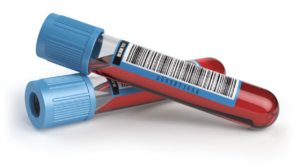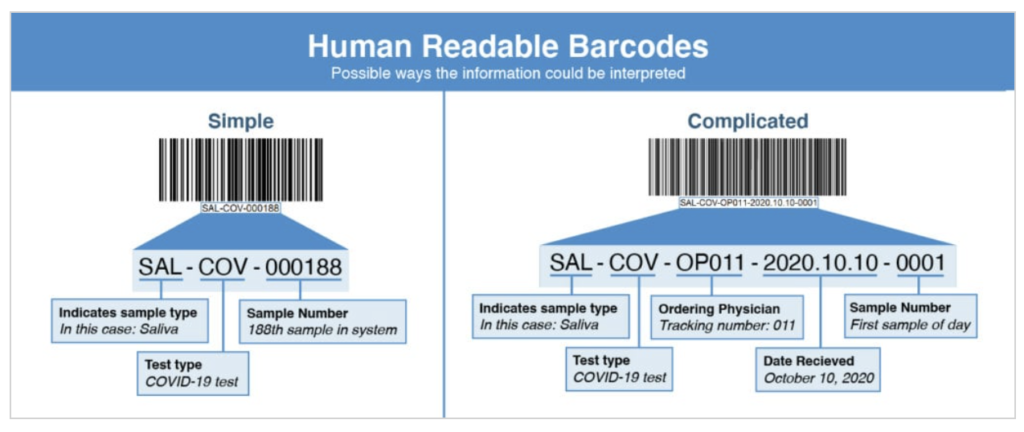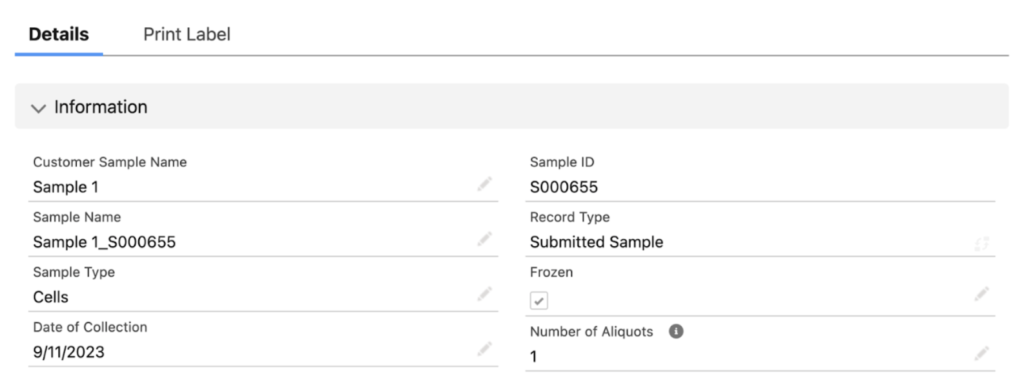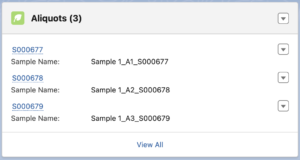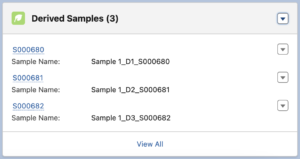The Power of Barcodes in LIMS and LIS Systems
Mastering the Art and Science of Modern Sample Management
In the lab, efficient and accurate management of samples is crucial. From sample accession to test results delivery, every step of sample processing demands precision, clarity, and high-quality standards.
Without accurate and thorough sample and barcode management, a lab may have suboptimal operations that can get in the way of accurate, timely results. Frustrating delays and misunderstandings between lab personnel and customers can also become common.
Consistent and unique sample identification and intelligent barcoding maintain order in a labyrinth of hundreds or thousands of samples.
This guide will show you how to manage these elements for better lab operations and happier customers.
Why Intelligent Barcodes Make a Lab Run Well
Along with an efficient sample ID system, new forms of barcode technology significantly improve the accuracy and speed with which samples are tracked and identified, reducing manual data entry errors and improving overall efficiency.
Today, the different barcode types used in a lab extend beyond traditional linear barcodes. Modern QR (Quick Response) codes offer advanced data-holding capabilities catering to unique lab requirements. Most labs now require a LIMS to handle modern QR barcodes to maintain accuracy and risk losing customers to more equipped competitors if they lack this capability.
A Closer Look at the Power of Barcodes: Reduced Errors, Improved Operations
Traditionally, manual data entry has been prone to human errors, sometimes resulting in unintended yet drastic consequences. Barcodes mitigate this risk by automating data entry, significantly reducing errors, and accelerating data processing times. With barcodes, laboratory workflow becomes streamlined.
One of the most critical functions of a LIMS is to help lab workers differentiate easily between samples, reagents, and plates. The best and most logical way to separate everything in the lab is for each item to have a unique barcode.
It sounds simple, but barcodes can be complicated; you’ll need to ask the right questions to determine what your lab needs from its barcode system. Please see our Lockbox LIMS barcoding functionalities video to learn more about specific barcode considerations.
Where and When to Use Barcodes
First, determine which physical lab items must be tracked with a unique identifier (the barcode). Generally, you’ll want to use a barcode to track anything easily confused or swapped with another physical item.
Why Not Just Use Handwritten Labels Instead of Barcodes?
We strongly recommend against relying on handwritten labels for three reasons:
- Handwriting is often hard to read.
- You can’t always count on team members to write an accurate or reliable description of the sample, reagent, or plate.
- Some sample tubes are too small to hold more than a few characters, making fitting an accurate and complete handwritten description nearly impossible.
A unique barcode is the solution that replaces handwritten notes and other antiquated lab labeling methods.
Your lab should also use unique barcodes to track samples as you’ll likely have hundreds to tens of thousands of pieces in your lab daily. Without barcodes, there’s no way to keep track of each sample. Barcodes can track 96- or 384-well plates you keep, which is especially helpful when plates look identical in the freezer or fridge.
Finally, it’s also wise to create barcodes for your reagents. You may have dozens of reagent lots in use anytime, making tracking difficult if you don’t have barcodes.
Other items you can track with a unique barcode include:
- Storage boxes or racks
- Storage equipment (e.g., freezers or fridges)
- High-complexity testing equipment (e.g., sequencer)
- General equipment (e.g., pipette, centrifuge)
- Computers, laptops, or computer tablets
When to Use Auto-generated Barcodes
Lockbox LIMS can automatically generate a barcode for any sample, plate, and reagent aliquot. By setting your lab up to automatically generate barcodes, you can ensure that a barcode always exists – and remove the worry of someone forgetting to take this step.
With automatic barcodes, you can reliably trust that the number generated will be unique within your LIMS. This is the most critical requirement for your lab’s barcoding because redundant barcodes lead to sample misassociation and incorrect data and results. If you encounter redundant barcodes within your lab, you’ll waste valuable time trying to untangle one mixed-up sample from another.
This scenario can be prevented when each barcode in your LIMS system is unique; in other words, when your LIMS automatically generates a barcode for you.
Can A Sample Have Multiple Barcodes or Identifiers?
It is common for some items in a lab (including samples) to require multiple barcodes or identifiers. This scenario is acceptable if your LIMS is organized to keep track of multiple barcodes or identifiers for a single sample.
Applying multiple barcodes to items in your lab can even be beneficial. For example, a clinical testing lab may assign an internal barcode to every sample it receives alongside the external sample barcode that an ordering physician associated with it. With the internal barcode, the lab can be confident that each sample has a unique identifier. At the same time, the lab keeps the external barcode associated with the sample so it can communicate the result appropriately to the correct ordering physician.
Should Barcodes Contain Human-Readable Information?
It’s also common and perfectly acceptable for certain portions of a barcode to contain human-readable information. For instance, a barcode including SAL-COV-000188 could indicate the sample is a saliva sample type (“SAL”), with a COVID-19 test order (“COV”), and is the 188th sample (“000188”) entered into the lab system.
If a lab usually has various sample types and associated tests, human-readable portions of a barcode are helpful. Lab personnel can immediately know a fair amount of information about a sample by checking its barcode. However, embedding data into a barcode can increase the complexity and take up space on the barcode label — and some are small and only have room for a handful of characters, as noted above.
There is no one best practice for embedding information into a barcode. If each sample has a unique barcode, a lab can add all sorts of helpful information to that barcode if it makes sense for the lab.
When to Generate Barcodes Using Complex Logic
There is nothing inherently wrong with using complicated logic to generate a barcode. Again, the only rule is that each barcode is unique — and if that’s the case, you can otherwise make your barcodes as complicated as you’d like.
Highly complicated logic can transform a barcode into more than just a simple identifier. You can encode so much information into a barcode that your lab personnel can immediately know much about the sample from the barcode number.
For example, let’s refer to this complex barcode: SAL-COV-OP011-2020.10.10-0001
This sample:
- is a saliva sample type (“SAL”)
- has a COVID-19 test ordered (“COV”)
- had an Ordering Physician send it with the tracking number “011” in your system (“OP011”)
- was received on October 10, 2020 (“2020.10.10”)
- was the first sample you received that day (“0001”)
That’s a lot of information to be gleaned from the barcode without even looking up the sample in your LIMS. However, it also means your LIMS must process considerable logic to generate a barcode for each sample.
If you want to encode more complex information in your barcodes, check that your LIMS can accurately generate unique barcodes with the required logic. Lockbox LIMS has these capabilities, but not all solutions are up to the task. Using the above example, some LIMS may be unable to easily pull information on the sample type, test ordered, or ordering physician. Some LIMS may also have difficulty resetting the incrementing sample number every day.
Can you Lab Print Barcode Labels From your LIMS?
With a modern LIMS like Lockbox LIMS, you can print barcode labels directly from the system. This ensures the label’s accuracy. Unfortunately, most LIMS don’t work effectively with a designated barcode or label printer. Consider this when assessing and deciding on a LIMS for your lab. If this function isn’t available from day one, it’s almost impossible to add it later.
Lockbox LIMS has unique barcode functionality that supports generating and printing barcodes directly from a record in the LIMS, significantly improving efficiency.
If you decide you want to print barcode labels, here are a few important considerations:
- Will your labels incorporate human-readable characters? Most labs consider it essential that every label has human-readable characters. Otherwise, scanning hundreds of samples to find one specific tube takes a lot of work.
- Should you have scannable barcodes? Scannable barcodes are handy if you need to find samples within your system quickly. However, not all labs need this functionality; find out if your lab does.
- If you need scannable barcodes, should they be 1D or 2D? The range of barcodes available today includes traditional linear and two-dimensional (2D) barcodes, including QR (Quick Response) codes. Each barcode type carries varying data capabilities, providing laboratories with flexible options catering to individual needs.
- 1D barcodes are ideal for encoding information. These barcodes only include numbers and letters — no special characters allowed. The longer the text string encoded, the longer the barcode.
- 2D barcodes (QR codes) are the new standard for encoding information. These are highly flexible and encode numbers, letters, and many unique characters. 2D barcodes take up much less space, with substantial text strings easily encoded within a tiny square.
Whichever barcode type you choose, ensure your lab’s handheld scanner can scan and process the information on the barcodes. Just about all scanners can understand 1D barcodes, but not all can read a 2D barcode. When you’re ready to buy scanners, consider what you plan to scan!
The Big Questions to Consider Regarding Barcodes in Your Lab
Before you add barcodes to your lab, here’s a summary of the most critical questions to discuss with your lab team:
- Which physical items in your lab require tracking with a barcode?
- Should your LIMS automatically generate barcodes for you?
- Will anything in your lab (including samples) have multiple barcodes associated with them?
- Will you have or need human-readable information contained in your barcodes?
- What type of logic is needed to generate your lab’s barcodes?
- Will you need to print barcode labels directly from the LIMS?
Modern Sample Management for Precision Results
Managing samples efficiently and accurately is the most crucial role in lab operations. From the moment a sample enters the lab to the results reported, an unbroken thread of fidelity and care must guide the entire process. The efficiency of the sample management system often defines lab success, dictating the accuracy of results, operational speed, and the level of customer satisfaction.
A logical sample ID system ensures the creation of unique, easily identifiable samples that can be quickly found, even in a sea of samples. Sample IDs are necessary, but there’s an art to creating them.
A two-field approach is the best way to start with advanced sample management in the lab.
The Dual Approach to Creating Sample IDs
A two-field sample ID approach is recommended for labs that must balance unique identifiers for proper tracking and client familiarity (so the lab and its customers can easily recognize sample data in their respective operating systems). This approach includes a Customer Sample ID and an Internal LIMS Sample ID.
- The Customer Sample ID includes any ID a customer assigns to their samples, ensuring a sense of familiarity and ownership for their daily business operations.
- The Internal LIMS Sample ID is created within a lab management system as an internal ID generated to meet lab tracking and identification requirements, often more stringent than customer requirements.
Separating these two fields allows a lab to maintain a customer-focused outlook while ensuring smooth internal operations. Customers likely want to see or hear their original sample IDs when a lab delivers the final sample report, and this approach satisfies both parties.
Here’s an example: Suppose a customer submits a sample to a lab with the primary ID ‘Sample 1.’ Chances are a different customer will do the same. If the receiving lab only uses the sample IDs provided by their customers, the lab will quickly accumulate many duplicate sample IDs, leading to confusion and constant errors.
How to Create Two Sample ID Fields
First, store the customer ID (customer ‘Sample 1’ in this case) in the first of the two data fields in Lockbox LIMS in the section marked ‘Customer Sample ID.’
Then, to create the data for the second field, Lockbox LIMS will automatically copy the customer sample ID and amend it so it’s globally unique within your Lockbox LIMS platform. Lockbox LIMS completes this action by adding the unique identifier to the end of the non-unique (‘Sample 1’) customer sample ID.
- Working with Complex Sample IDs: Aliquots, Derived Samples, and Child Records. Maintaining identification consistency is even more critical when working with aliquots, derived samples, or child records from a parent sample. Sample IDs should ensure all related or derived samples are easily identifiable, flawlessly trackable, and unambiguously linkable to their source.
A lab must decide on a process to ID and name child records, aliquots, and derived samples. This includes whether to retain the customer’s original sample ID in the name of the aliquot or derived sample.
- Handling Derivations for Child Records. Labs must also traverse another layer of nuance when using an ID for child sample records. For example, a lab might order these to indicate the sequence in which the child samples were created; a third derived sample could include a “3” within the record ID. Ultimately, this sample management approach is up to the lab to decide upon. If the lab wants to add a sequence counter or unique sample name identifier, Lockbox LIMS also makes this easy to do. Within Lockbox LIMS, specific settings can be turned on or off with a simple point-and-click configuration.
The New Lab Efficiency
With a meticulous sample ID protocol and innovative barcode technology, your lab can expect a significant enhancement to lab management. The two-phased approach also paves the way for transparent, traceable, and customer-centric operations.
As we move toward increased technology integration, labs that embrace advanced practices for sample management will be the chosen environments to deliver precision, speed, and customer confidence.
Explore more insights about laboratory management and discover how a comprehensive LIMS can modernize your lab.
